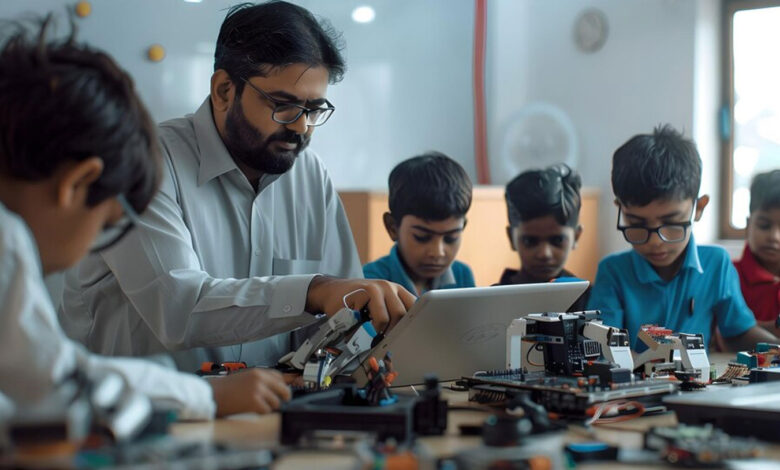Reimagining Schools through Innovation: The Mission Samagra Vikas Model

Dr. Aenugu Srikanth Reddy – Chairman, Slate Group of Schools, Jannaram, Telangana
Why Innovation Must Be More Than Technology
As education systems evolve, true innovation lies not just in adopting digital tools but in rethinking how we nurture learners. Especially in rural and semi-urban areas, innovation must be purpose-driven and rooted in real-life impact. At Slate Group of Schools, we created such a model through Mission Samagra Vikas—a holistic development initiative redefining how schools can function as hubs of transformation.
Mission Samagra Vikas: Innovation Rooted in Purpose
Mission Samagra Vikas is not a program; it’s a culture shift. It aligns students, teachers, and families towards a shared vision of growth—academically, emotionally, and socially—through systematic innovation across key areas of schooling.
Lead and Lag Measures: A Framework for Predictable Change
A unique innovation in this mission is the use of lag measures and lead measures, borrowed from performance science and adapted to the school ecosystem.
Lag Measures: Where am I now? Where do I want to be, and by when? These include academic scores.
Lead Measures are daily actions that can influence and predict success. For example: Teachers dedicate 8 minutes per class to support struggling learners and challenge advanced students.
Students spend 8 focused minutes per subject each day during house sessions on personalized tasks—reading, solving, or reflecting.
These practices are small, yet predictable and influenceable, making them powerful tools for consistent growth.
Pocket of Excellence: Building Belief from Within
Students are guided to reflect on their ‘Pocket of Excellence’—a behavior or habit that previously brought them success. They then consciously reapply it as part of their lead measures.
This simple strategy has had profound impact:
Students who struggled with reading identified that reading aloud or peer teaching helped them earlier. Reinstating that as part of their daily lead measure led to visible improvements in fluency and exam performance, in turn boosting belief and confidence.
Structured Measurement and Continuous Review
To convert these innovations into consistent habits, Mission Samagra Vikas uses a multi-layered monitoring structure:
- Daily Checks: Teachers and students log whether lead measures were followed.
- Weekly Review Sessions: Class-level reflection helps identify areas of improvement and celebrate small wins.
- Monthly Progress Reviews: Leaders and teachers analyze lag measures to assess actual progress and redesign strategies as needed.
This ensures the mission stays live, measurable, and adaptive.
Innovation as a Way of School Life
True innovation in schools is not about apps or hardware—it’s about rethinking systems, relationships, and mindsets. Mission Samagra Vikas proves that change is possible when innovation is grounded in strategy, empathy, and execution.
As India looks to build its next generation of learners and leaders, schools must transform into ecosystems of excellence, equity, and innovation. Mission Samagra Vikas is one such living example—and we hope it inspires many more.
The post Reimagining Schools through Innovation: The Mission Samagra Vikas Model appeared first on India Didactics Association.






